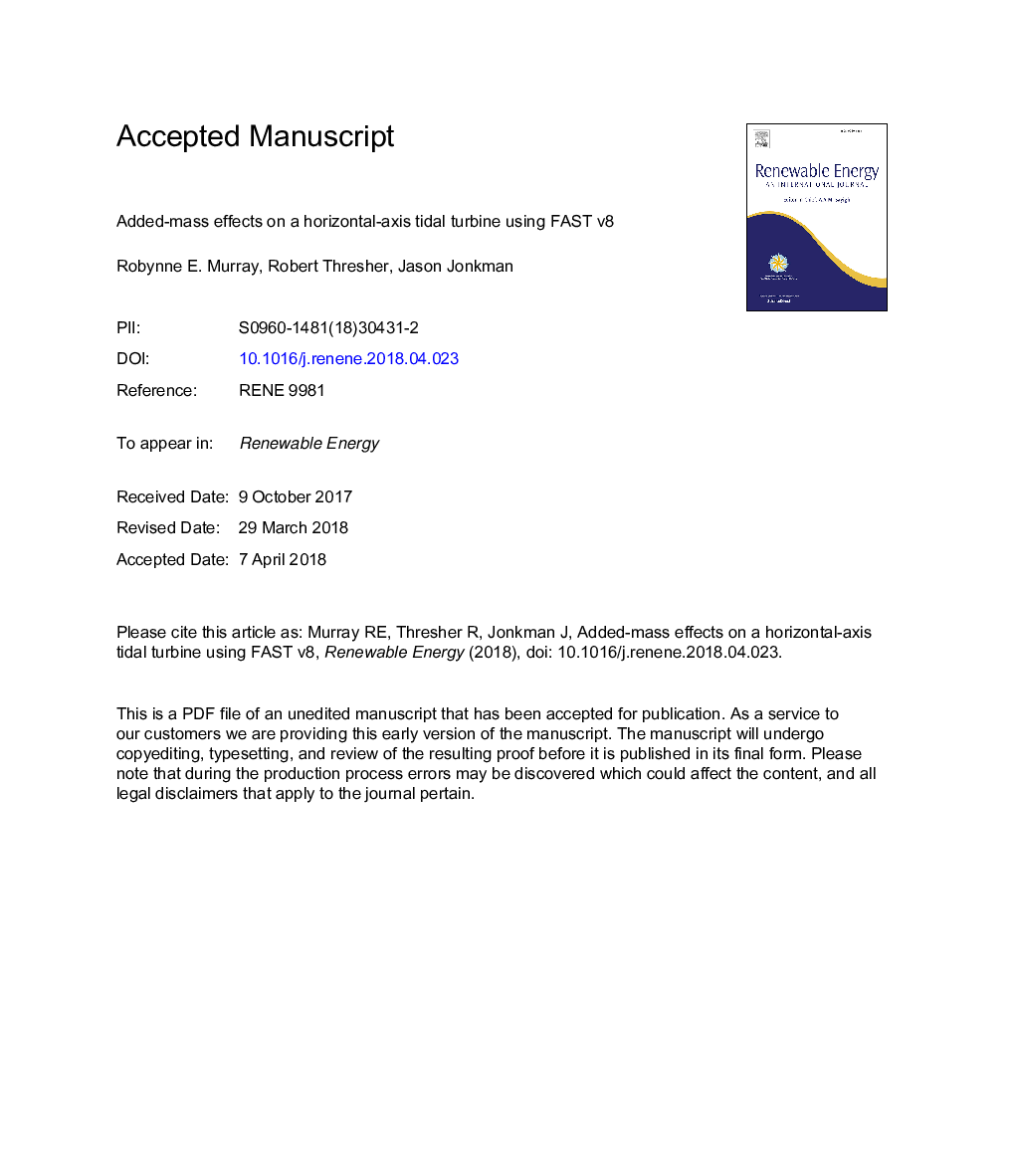| Article ID | Journal | Published Year | Pages | File Type |
|---|---|---|---|---|
| 6764365 | Renewable Energy | 2018 | 26 Pages |
Abstract
Added mass on tidal turbine blades has the potential to alter the blade dynamic response, such as natural frequencies and vibration amplitudes, as a response to blade acceleration. Currently, most aeroelastic design tools do not consider such effects as they are complex and expensive to model, and they are not an intrinsic part of most blade-element momentum theory codes, which are commonly used in the tidal energy industry. This article outlines the addition of added-mass effects to the National Renewable Energy Laboratory's design tool FAST v8. A verification is presented for a spring-mass system with an initial displacement, and a case study is performed for the Reference Model 1 20-m-diameter tidal turbine. For the 20-m-diameter turbine, it was shown that the natural frequency of vibration is reduced by 65% when added mass is considered. Further, the thrust loads are increased by 2.5% when the blades are excited by a 5% step increase in inflow velocity when added mass is considered. This decrease can have a significant impact on the overall turbine design, as it is important to design the blades with a natural frequency so that they are not excited by the rotor speed and its harmonics, wherein aerodynamic excitation can lead to fatigue damage. However, it was shown that when turbulent inflow with an intensity of 20% was modeled, there was almost no impact on the loads and blade displacement with added-mass effects except for a small difference in the fatigue response of the blade to turbulent load fluctuations.
Related Topics
Physical Sciences and Engineering
Energy
Renewable Energy, Sustainability and the Environment
Authors
Robynne E. Murray, Robert Thresher, Jason Jonkman,
